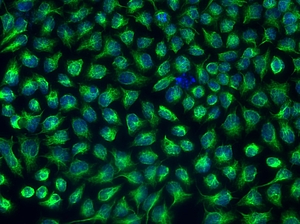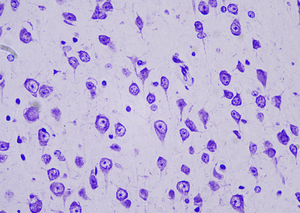AG Keiler
Our interest
As part of biomedical research, pathological diagnosis, student training and the establishment of new surgical techniques, various organs or entire bodies have to be fixed and, thus, protected from decay. For this purpose, solutions containing formaldehyde have been used for decades. However, due to known carcinogenic and teratogenic effects, formaldehyde-based solutions are questionable in terms of occupational health and safety aspects. It must be assumed that there will be an EU-wide ban in the near future. Research into alternative methods of tissue fixation and conservation in biomedical research, pathology and anatomy is, therefore, urgently needed. The preservation of biological samples with the help of preservatives is also used in the food industry. They are used to protect products against spoilage thanks to their antimicrobial effects. The food preservatives used in Germany are largely considered to be harmless to health and could thus represent a promising alternative to fixatives containing formaldehyde.
In preliminary experiments, we were able to demonstrate that lactic acid-based solutions have a broad antimicrobial spectrum and that fixed murine tissue samples can subsequently be used for histochemical and immunohistochemical stains. As part of the project presented here, the fixative effects of food preservatives for use in biomedical research, pathology and anatomy as a substitute for formaldehyde-based fixation will be investigated. Based on our promising preliminary findings, various lactic acid-based solutions will be further investigated with regard to their fixation properties, their antimicrobial spectrum, tissue preservation and the suitability of subsequent histological analyzes. In order to investigate the possible use of lactic acid-based solutions in clinical-anatomical courses, long-term preservative effects, biomechanical tissue properties and color retention will be investigated in murine and human tissues. In addition to these objective analyzes, the quality of fixed corpses of body donors is assessed as part of anatomical advanced training courses. This project, thus, makes an important contribution to the sustainable assurance of research, tissue diagnostics and teaching based on body donations.
Key cooperations
- Warnke, Philipp; Institute for Medical Microbiology, Virology and Hygiene, Rostock University Medical Center, Rostock, Germany.
- Milz, Stefan; Department of Neuroanatomy, Ludwig-Maximilians-University, München, Germany
- Huy, Peter; Institute for Chemistry, University of Rostock, Rostock, Germany
Most important publications
- Keiler J, Bast A, Reimer J, Kipp M, Warnke P (2024). Quantitative and qualitative assessment of airborne microorganisms during gross anatomical class and the bacterial and fungal load on formalin-embalmed corpses. Scientific Reports 14, 19061 (2024). https://doi.org/10.1038/s41598-024-69659-y
Current and most recent fundings
- DFG Projektförderung (KE 2509/2-1 | KI 1469/16-1 | WA 5119/2-1)
- Titel: Alternative Gewebefixierungen in biomedizinischer Forschung, Pathologie und Anatomie


